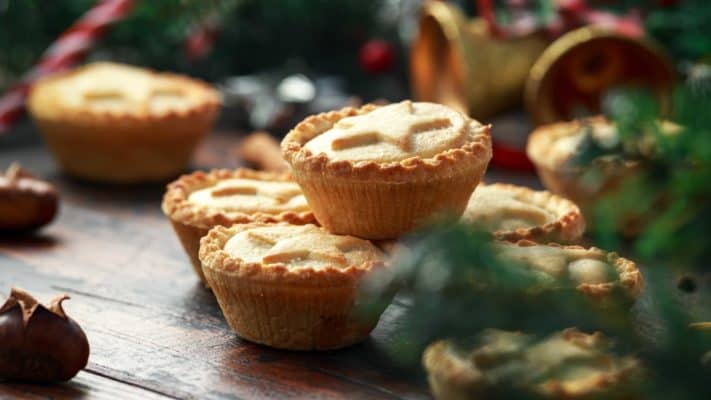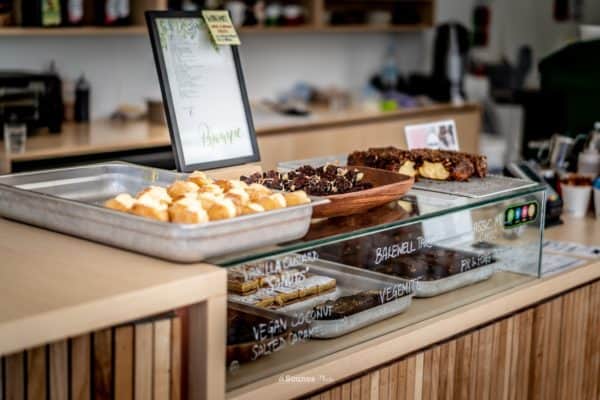What does Christmas say to you? Does it say long summery days and barbecues? The kids off from school for forever? Seeking out all of the outdoor seating areas in town? Coming from the Northern Hemisphere, Christmas has always been a very different affair for me: where I’m Dreaming of a White Christmas actually makes sense, and everywhere you turn Santa in a jolly red suit doesn’t make you think of heatstroke, but instead a chill in the air and reindeer dashing through the snow.

Despite that, one thing we probably can all agree on are the ubiquitous Christmas treats, whether it’s a Christmas pavlova, heaped high with whipped cream, passionfruit, kiwi fruit and strawberries, or – my personal fave – Christmas Mince Pies. Known to us now as delicate little buttery pastries, hiding a treasure trove of dried fruit and spices, Mince Pies actually have a fascinating history, and one that takes them right back to the origins of their name.
Traceable to the 13th Century, the roots of Mince Pies came from European crusaders who travelled back from the Middle East with recipes containing meats, fruits and spices. These early forms of Mince Pies did actually contain minced meat – ranging from mutton and goose to beef tongue – as well as suet (beef or mutton fat), a range of fruits, and exotic spices, such as cinnamon, cloves and nutmeg, which some believe were a nod to the offerings of the magi. All of this was enveloped within thick walls of pastry and were much larger than we now know them to be, designed to feed many people. Food historians agree that early pie pastry was not actually meant to be eaten, instead used as a vessel in which food was cooked (known as “the coffin”), and to preserve the contents in an age of pre-refrigeration.
Mince Pies have not been without scandal, however. At some point, certainly by the mid-17th Century, Mince Pies had become synonymous with Christmas. They started to take a rounder shape, supposedly to symbolise the baby Jesus in the manger, but when the Puritans came to power in the UK, Christmas became a symbol of paganism and “frivolous”, with Oliver Cromwell even trying to abolish it (along with all other holy days). Whilst this particular bill did not pass Parliament, others did and some of the laws came down hard on holy day feasting and ceremonies. Mince Pies were never explicitly outlawed or mentioned in particular but rumours in later years began to circulate that Cromwell had outlawed them, which may have contributed to their Christmas popularity!
Over the next century, the contents of Mince Pies had gradually transitioned from meat to sweet, likely due to the rise of sugarcane plantations and how much easier and cheaper it was to obtain sugar. By the time the UK had reached the Georgian and Victorian eras, they were firmly in the sweet camp – though still retained the use of suet – with fruit and spice mixes prepared months in advance and stored in jars to allow the flavours to steep. Mince Pies were seen as a status symbol and wealthy families would show off at their Christmas parties with the – by now much smaller – pastries shaped like stars, crescents, hearts and flowers, which could often fit together like a jigsaw to create a tableau for guests to marvel at.

Certain aspects of this history have been retained over time – the sweet filling with the addition of suet (though you can now get vegetarian suet, which I prefer), the small delicate pastries, often decorated with stars or various other shapes, and, of course, plenty of Christmas cheer (and a smidgen of controversy). The following recipe is my favourite, and I’ve tried many! It was developed by one of my friends when he worked at one of the best restaurants in the UK and I’ve unashamedly nicked it because it is, simply, the best. Roll up your sleeves, gather the kids around and get into the spirit of Christmas! And, if you’d like to see what all the fuss is about without having to make them yourself, pop in and see us at Lashings HQ in Wellington on the corner of Dixon & Eva Streets to treat yourself! Click here for Lashing Mince Pie Recipe.

Article in collaboration with Lashing HQ, Jackie Lee
Having worked in 5* hotels and high-end restaurants all over London for years, Jackie saw moving to New Zealand as an opportunity to really start creating the food she wanted to feed people. From our range of True Brownies (single-origin chocolate brownies, made from chocolate produced right here in wellington),to delicious treats made to satisfy your sweet tooth, lashings wants to Make Your Belly Happy.
